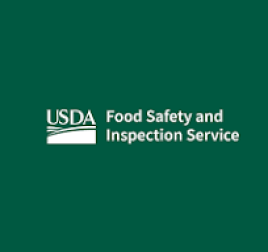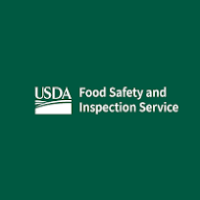FSIS Issues ‘Product of USA’ Label Claim Rule

The Department of Agriculture’s Food Safety and Inspection Service (FSIS) finalized a rule to align the voluntary “Product of USA” label claim with consumer understanding of what the claim means.
The rule “is a vital step toward consumer protection and builds on the Biden-Harris Administration’s work to bolster trust and fairness in the marketplace where smaller processors can compete,” Agriculture Secretary Tom Vilsack said in announcing the rule release. “This final rule will ensure that when consumers see ‘Product of USA’ they can trust the authenticity of that label and know that every step involved, from birth to processing, was done here in America.”
The rule allows the voluntary “Product of USA” or “Made in the USA” label claim to be used on meat, poultry and egg products only when they are derived from animals born, raised, slaughtered and processed in the United States. “The rule will prohibit misleading U.S. origin labeling in the market and help ensure that the information that consumers receive about where their food comes from is truthful,” the agency said.
Under the final rule, the “Product of USA” or “Made in the USA” label claim will continue to be voluntary. It will also remain eligible for generic label approval, meaning it would not need to be pre-approved by FSIS before it can be used on regulated product, but would require the establishment to maintain documentation on file to support the claim. The final rule also allows the use of other voluntary U.S. origin claims on meat, poultry and egg products sold in the marketplace. These claims will need to include a description on the package of the preparation and processing steps that occurred in the United States upon which the claim is made.
Establishments voluntarily using a claim subject to the final rule will need to comply with the new regulatory requirements by Jan. 1, 2026, and are encouraged to do so as soon as practicable.
USDA has also published an updated labeling guidance to provide information about voluntary “Product of USA,” “Made in the USA,” or alternative claims that specify processing or preparation steps that occur in the United States based on the final rule, as well as examples of claims and the types of documentation that establishments may maintain to support use of the claims.
The revised version of the FSIS Guideline for Label Approval replaces the January 2023 version of the guideline.
“The information in this guideline is provided to assist establishments in meeting regulatory requirements. The contents of this document do not have the force and effect of law and are not meant to bind the public in any way. This document is intended only to provide clarity to industry regarding existing requirements under the regulations,” the agency noted.
The guideline is focused on small and very small establishments, in support of the Small Business Administration’s initiative to provide small businesses with compliance assistance under the Small Business Regulatory Enforcement Fairness Act. “However, all establishments may apply the recommendations in this guideline,” the agency added. “It is important that small and very small establishments have access to a full range of scientific and technical support, and the assistance needed to label products in compliance with FSIS regulations. Although large establishments can benefit from the information provided, focusing the guideline on the needs of small and very small establishments provides them with assistance that may be otherwise unavailable to them.”
According to the revised guidance, “Product of USA,” “Made in the USA,” and other voluntary U.S.-origin claims on labels of products under FSIS mandatory inspection or voluntary inspection services may be generically approved, “provided that the labeling record is sufficient to support the claim.”
To make a “Product of USA” or “Made in the USA” claim, the product must be derived from an animal born, raised, slaughtered, and processed in the United States. For single ingredient items, the entire product must be derived from an animal born, raised, slaughtered, and processed in the United States (9 C.F.R. §412.3(a)).
For a multi-ingredient product, the product must be derived from animals born, raised, slaughtered, and processed in the United States; all other ingredients in the product, other than spices and flavorings, must be of domestic origin; and the preparation and processing steps for the multi-ingredient product must have occurred in the United States (9 C.F.R. §412.3(b)).
The guideline lists some examples of labels that can be generically approved:
- A single ingredient pork product labeled with “Made in the USA,” which is derived from an animal born, raised, slaughtered and processed in the United States (9 C.F.R. §412.3(a)), provided the labeling record includes sufficient information to support the claim.
- A multi-ingredient pork sausage product labeled with “Product of USA,” wherein all the FSIS-regulated ingredients are derived from animals born, raised, slaughtered and processed in the United States; all other ingredients, other than spices and flavorings, are of domestic origin; and the preparation and processing steps for the product occurred in the United States. The labeling record must include sufficient information to support the claim.
- A multi-ingredient meatloaf product label that has the statement “Made with U.S. Beef” can be generically approved, provided the labeling record includes sufficient support that the beef used in the product was derived from an animal born, raised and slaughtered, and the meat then processed, in the United States.
- A single ingredient steak product label that has the statement “U.S. Beef” can be generically approved, provided the labeling record includes sufficient support that the beef product was derived from an animal born, raised and slaughtered, and the meat then processed, in the United States.
The guideline added that factual U.S.-origin claims other than “Product of USA” and “Made in the USA” may be made to designate the U.S.-origin component of a FSIS-regulated product’s preparation and processing (9 C.F.R. §412.3(c)). “The claims must include a description of the preparation and processing steps that occurred in the United States upon which the claim is made,” the guidance said. “This claim description should provide meaningful consumer information about the specific type of preparation and processing steps that occurred in the United States.”
For example, the generalized claims “Processed in the United States” or “Manufactured in the United States” are so broad as to not provide the consumer meaningful information about what preparation and processing steps occurred in the United States, the guideline said.
Examples of labels that can be generically approved under 9 C.F.R. §412.3(c), and that provide meaningful information about the product’s preparation and processing, include:
- A label for single ingredient pork tenderloin that has the claim “sliced and packaged in the United States” can be generically approved, provided the labeling record includes sufficient support that the product has been sliced and packaged in the United States.
- A label for a beef empanada that has the statement “beef raised, slaughtered, and processed in the United States” can be generically approved, provided the labeling record includes sufficient support that the beef used in the product was derived from an animal raised and slaughtered, and the meat then processed, in the United States.
In addition, labels that make a factual claim about a specific U.S. state, territory or locality can be generically approved, provided the claim meets the requirements for use of U.S.-origin claims under 9 C.F.R. §412.3(a)-(c) with regards to the U.S. state, territory or locality origin. Some examples of a U.S. state, territory and locality-origin factual claim that can be generically approved include:
A single ingredient beef label that has the factual claim “Product of Montana.” “This claim must meet the requirements in 9 C.F.R. §412.3(a) for the use of a voluntary ‘Product of...’ claim on single ingredient products,” the guideline said. “That is, the product must be derived from an animal born, raised, slaughtered, and the meat then processed, in Montana.” The label can be generically approved, provided there is sufficient support in the labeling record for the claim.
A single ingredient beef product that is derived from an animal born, raised and slaughtered in a foreign country, then brought to Oklahoma to be sliced and packaged, could have a voluntary factual claim “Sliced and Packaged in Oklahoma.” This claim would meet the requirements under 9 C.F.R. §412.3(c) for the use of other voluntary U.S.-origin claims, provided there is sufficient support in the labeling record that the product was sliced and packaged in Oklahoma. The guideline noted that displays of the U.S. flag, or a U.S. state or territory flag, are permitted on labels of products under FSIS mandatory inspection or voluntary inspection services to designate the United States, U.S. state, or U.S. territory origin of single and multi-ingredient products or components of a product’s preparation and processing (9 C.F.R. §412.3(e)). The display of the flag must meet the requirements for use of voluntary U.S.-origin claims under 9 C.F.R. §412.3(a)-(d). “For the purposes of the display of a flag that meets the requirements for use of U.S.-origin claims other than ‘Product of USA’ and ‘Made in the USA’ under 9 C.F.R. §412.3(c) or (d), the display must be accompanied by a description of the preparation and processing steps that occurred in the United States, or in the U.S. state, territory, or locality.” Examples of labels that can be generically approved under 9 C.F.R. §412.3(e) include:
A meat product labeled with a standalone display of the U.S. flag, which is derived from an animal born, raised slaughtered, and the meat then processed, in the United States, provided there is support in the labeling record for the claim.
Display of the New York state flag on a pork product label with the claim “Sliced and Packaged in New York,” provided there is sufficient support in the labeling record that the product was sliced and packaged in New York.
Establishments and facilities under voluntary inspection choosing to use a voluntary U.S.-origin label claim must maintain, and provide FSIS access to, documentation sufficient to demonstrate that the product meets the regulatory criteria for use of the claim, and that the claim is not false or misleading. The recordkeeping requirements, including general examples of types of documentation that may be maintained to support a voluntary U.S.-origin claim, are in 9 C.F.R. §412.3(f) and (g). Specific examples of the types of documentation that may be maintained include:
- For a “Product of USA” label claim on a single ingredient beef product, records from a ranch located in Wyoming demonstrating that the animal from which the product was derived was born, then raised until slaughter, on the ranch. “This claim would require additional documentation to support that the product was also slaughtered and processed in the United States,” the guideline said.
- For a “Sliced and Packed in New Jersey” label claim on a pork sausage product, records from a processing facility located in New Jersey demonstrating that the product was sliced and packaged in the facility.




